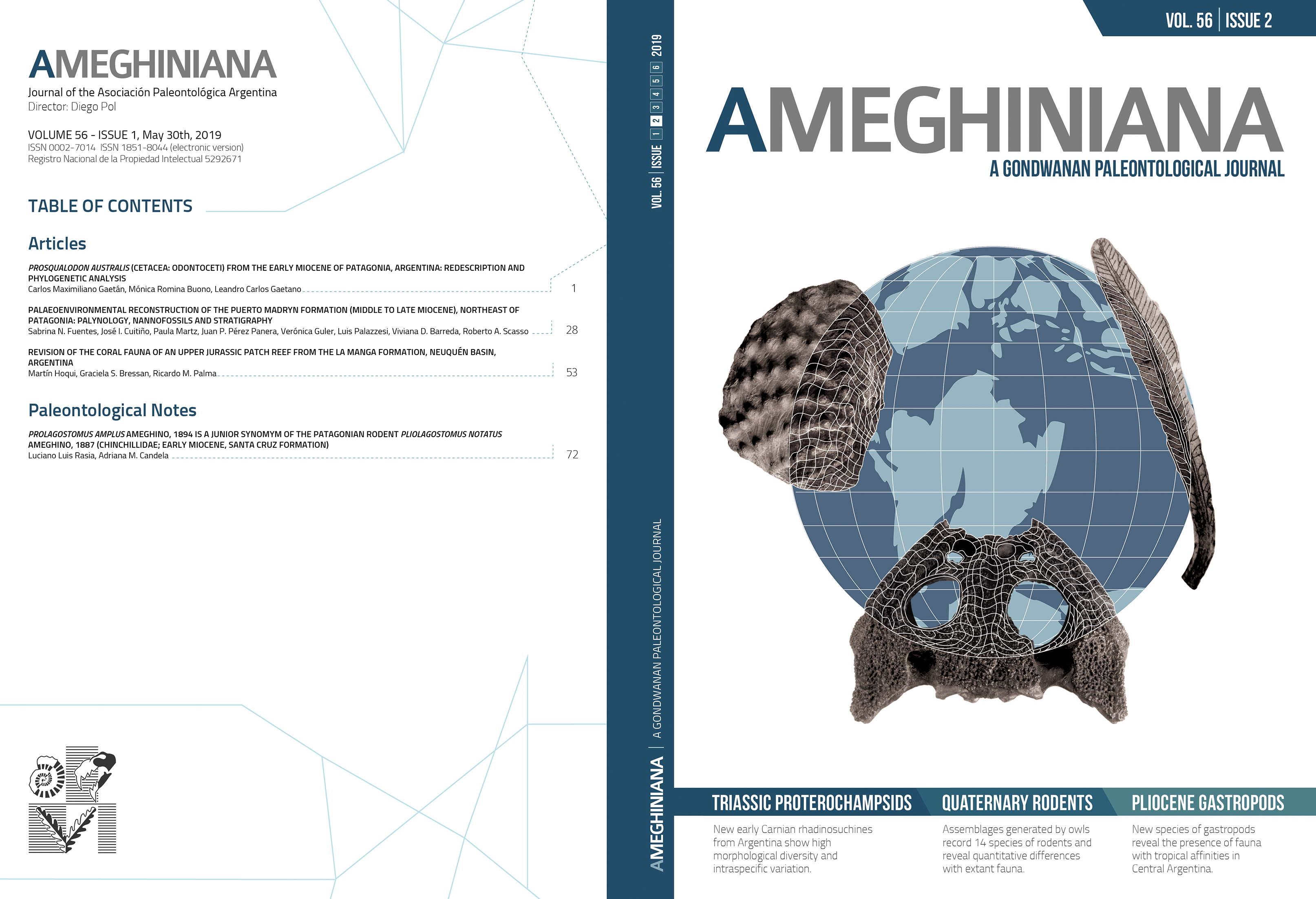EVOLUTION OF SMALL MAMMAL COMMUNITIES DURING THE LATE QUATERNARY IN A MIDDLE-ALTITUDE VALLEY OF NORTHWESTERN ARGENTINA
Keywords:
Early Holocene, Late Pleistocene, Paleoenvironments, Reithrodon auritus, Sigmodontinae, Small mammal assemblages, TucumánAbstract
We described a fossil small mammal assemblage from La Mesada (2250 m), Tafí valley, Tucumán, Argentina, recovered from levels referred to late Pleistocene – early Holocene. Gastric corrosion in bones and teeth indicates that the assemblage was generated by the trophic activities of owls. The assemblage is composed by 14 species of rodents: 12 living (Abrothrix illutea, Akodon spegazzinii, Oxymycterus sp., Andinomys edax, Oligoryzomys brendae, Oligoryzomys cf. O. occidentalis, Calomys cf. C. musculinus, Phyllotis sp., Reithrodon auritus, Cavia cf. C. tschudii, Galea leucoblephara, and Ctenomys sp.), one extinct (†Tafimys powelli), and one indeterminate (Sigmodontinae indet.). The sample is characterized by the remarkable dominance of R. auritus (53%) in contrast to its low frequency in other fossil and present-day samples in the area, the presence of †T. powelli, and the absence of one species currently present in the valley (Necromys lactens). The fossil sample shares general similarities with other late Pleistocene – early Holocene assemblages in northwestern Argentina, but there are relevant qualitative and quantitative differences. Although all living species of the fossil sample occur in sympatry in the same area, its quantitative representation (dominance of R. auritus and a higher proportion of herbivore species) is coherent with paleoenvironments with a clear predominance of highland grasslands, involving both the descent and contraction of the vegetation belts on mountain slopes. However, it cannot be discarded that the current scarcity of R. auritus is more related to the anthropic impact than to the prevailing climate in the valley.Downloads
Published
Issue
Section
License
Authors publishing in Ameghiniana have the option of making their article freely available online. Authors opting for the Open Access must pay a fee of $300 (US dollars) to cover article-processing costs and to ensure the article is made open access. Please contact the Production Team after the acceptance of your manuscript if you are interested in making your article Open Access. This option implies by default a license Creative Commons Attribution Non-Commercial-NoDerivs License (CC BY NC ND). If your funding institution requires a different licensing option please communicate this to the Production Team after the acceptance of your manusctipt.











